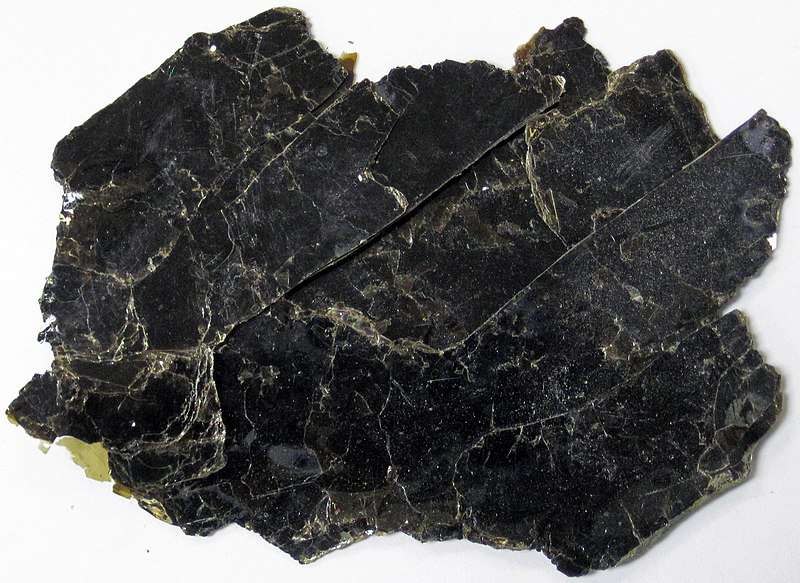
Appearance
While biotite usually has a dark brown to black color, it can occasionally seem green, reddish-brown, or even colorless. Because iron (Fe) is a part of its structure, it has a deeper color. Since biotite is often translucent to opaque, light cannot easily flow through it. Excellent basal cleavage allows biotite to be readily divided along its cleavage planes into thin, flexible sheets.
Geographical Distribution
Large cleavable crystals of biotite are sometimes discovered in pegmatite veins in the USA, particularly in New England, Virginia, and North Carolina. Sudbury, Ontario, Canada, and Bancroft are two other noteworthy places.
History
In the field, black micas that have not been analyzed are still referred to as biotites. J.F.L. Hausmann gave the name “biotite” to the mineral in 1847 to honor Jean-Baptiste Biot, a French scientist who conducted pioneering studies on the diverse optical characteristics of mica. Sheet silicates form the biotite category of materials.
Metaphysical Properties
It’s thought that this deep brown stone can help you connect with the divine and your higher self, as well as foster spiritual growth. Clairvoyance and clairsentience are two examples of intuitive talents that biotite is thought to assist develop.

Chemical Composition
In comparison to muscovite, biotite has a more complicated chemical composition. Its usual formula is K(Mg,Fe)_3AlSi_3O_10(OH)_2, meaning that in addition to hydroxide (OH) ions, it contains potassium (K), magnesium (Mg), iron (Fe), aluminum (Al), silicon (Si), and oxygen (O) atoms.
Uses
Because of its special qualities and features, biotite has a number of significant functions and applications in a variety of industries.
- Geological and Mineralogical Studies:
Rock Composition Indicator: The presence of biotite in rocks can reveal information about the mineralogical composition and age of the rock, making it a useful mineral for geologists and mineralogists.
Geochronology: To ascertain the age of rocks and geological events, biotite can be employed in radiometric dating methods such as potassium-argon dating. Understanding the timing of geological processes and occurrences depends heavily on this.
- Industrial Applications:
Filler Material: Biotite is a less popular filler material than muscovite, but it is nonetheless useful in a variety of industrial applications. In order to enhance the qualities of paints, plastics, and other materials, it is occasionally added.
Insulating Material: Because biotite has electrical insulating qualities, thin sheets of biotite can be employed as insulating material in certain specialized applications.
- Gemstone and Ornamental Use:
Rare Gemstone: Transparent biotite types with appealing colors, such green or reddish-brown, and good clarity can be carved and polished to create jewels. Nonetheless, in contrast to other minerals used to make jewelry, biotite gemstones are somewhat uncommon.
- Scientific Research:
Mineralogical Research: To gain a better understanding of biotite’s crystallography, physical characteristics, and behavior under various situations, it is frequently investigated in labs and research settings. This study advances our understanding of minerals and their characteristics.
- Education:
Teaching and Learning: In geology and mineralogy classes, biotite is utilized as a teaching aid. It aids in the teaching of cleavage, mineral identification, and other geological ideas to students.
- Historical Significance:
Historical Documentation: Rock samples and geological formations have previously been documented using biotite. It continues to be significant for historical reference and was involved in early geological studies.
Table





